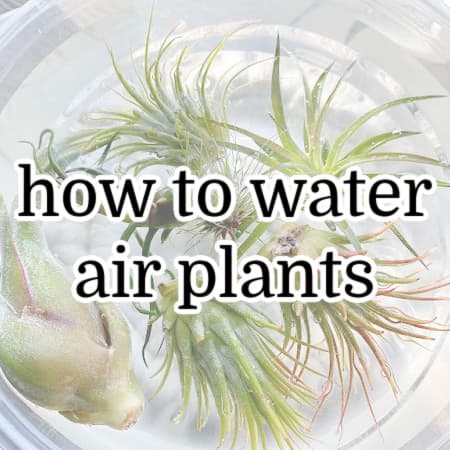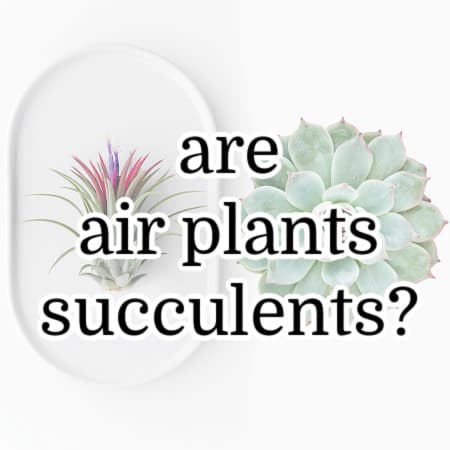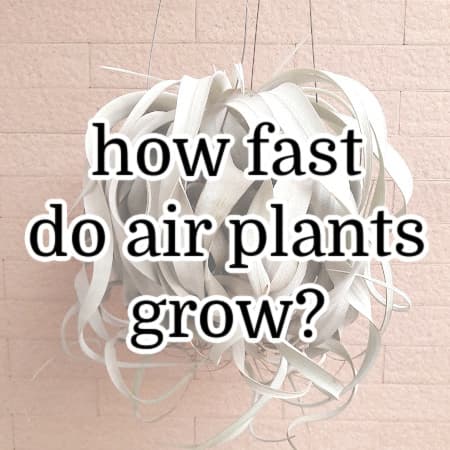How Much Light Do Air Plants Need To Thrive Indoors? (& When You Should Supplement)
Air plants are great for decorating your office or home because they’re small, cute, and don’t need any soil to grow. But how much light do air plants need to thrive indoors?
Read on to find out how you can provide the right amount of natural and artificial light for your plant babies, plus some other air plant care tips!
Pin this to your favorite gardening board on Pinterest!
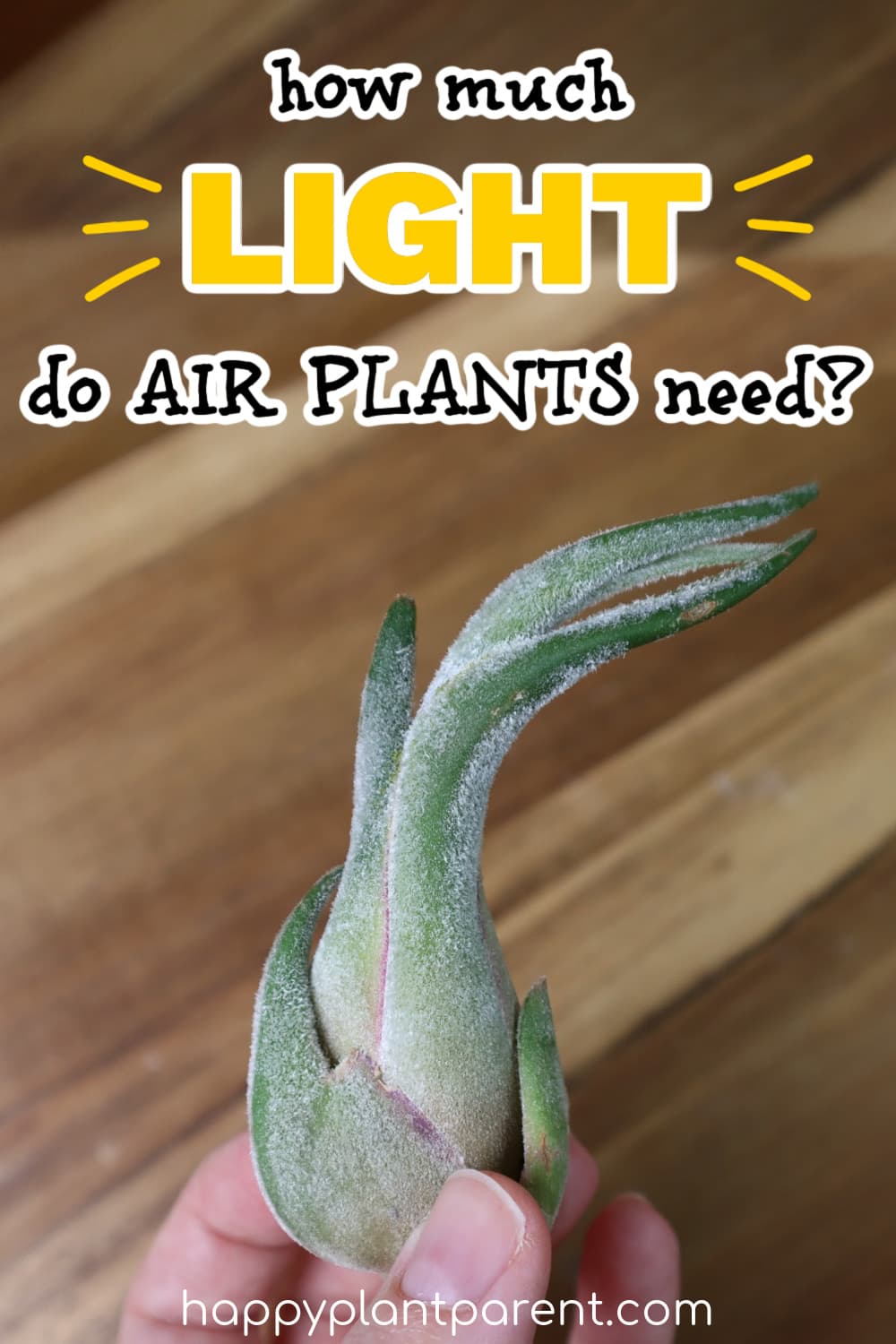
(This post contains affiliate links. If you click one and make a purchase, I may receive a commission at no extra cost to you. Read the disclaimer here. Thank you for your support!)
What are air plants?
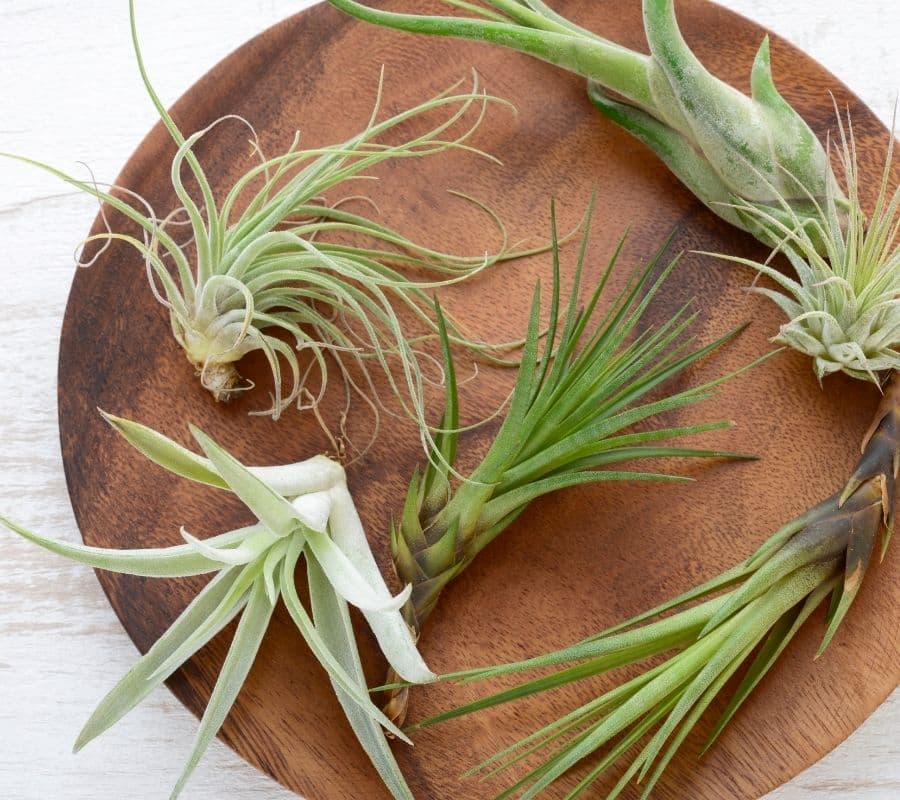
Air plants, or Tillandsia as they’re known scientifically, are a genus of around 650 different plants. They originate in warm environments like Central America, South America and parts of the southern United States.
They don’t need soil to survive and instead use small structures called trichomes on their leaves to gather water and nutrients from the air.
In their natural habitat, air plants attach themselves to other plants and tree branches so they can get optimal bright light, rain water, and all the nutrients that air plants need.
The foliage from the plants they live on shield them from getting too much direct light and keep from sitting in excess water.
When you have air plants in your home, it’s a totally different ball game. It’s all on you, and it’s important to know what the light needs are for your little plants so they can thrive.
Let’s take a look at how much light air plants need and when you need to supplement with artificial lights.
How Much Light do Air Plants Need?
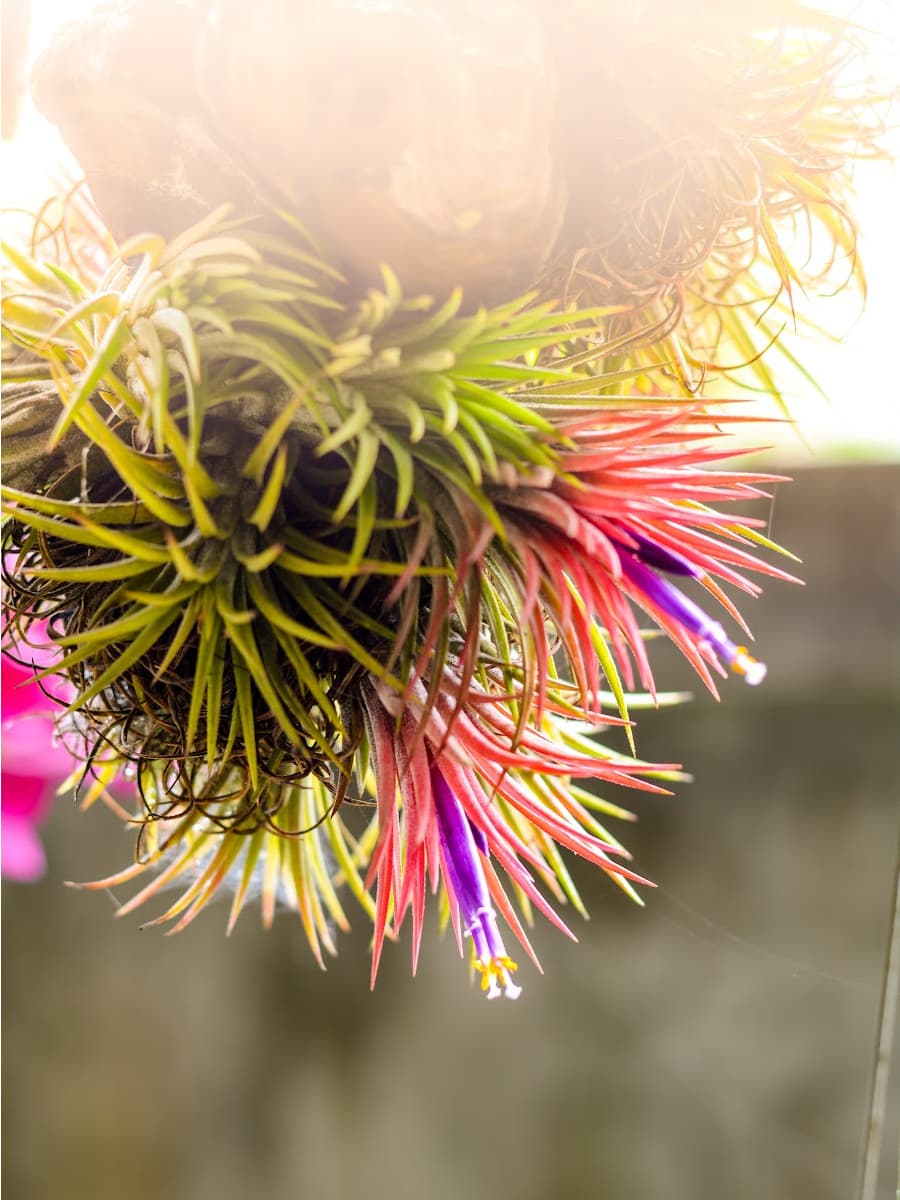
As a general rule of thumb, air plants need lots of bright indirect light to thrive.
That means you don’t want them getting very much direct, harsh light, because it’ll fry their little leaves and you’ll end up with a crispy air plant.
Now, there is one type of air plant that can tolerate more light than others, and we’ll talk about that in a minute. But real quick, let me explain what I mean by indirect light.
So what does indirect light mean, anyway?
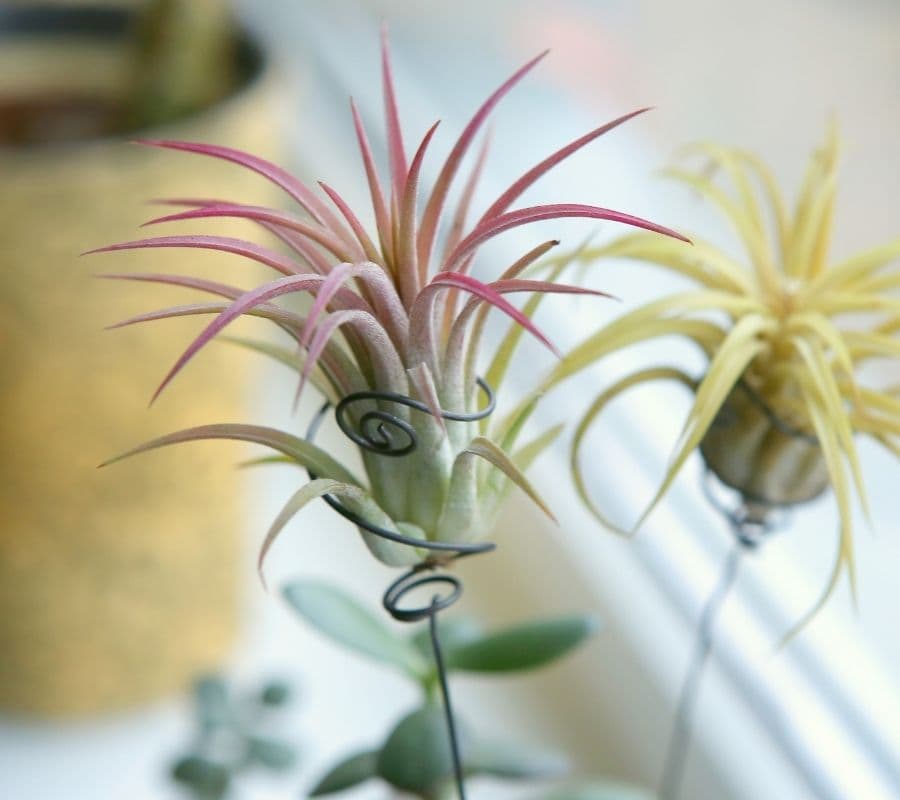
First, let’s define direct light. Direct light is when the sun’s rays are actually shining on your plant. If you have a cat or a dog, they might like to bask in the direct sun when it comes in your window.
- Direct light is the kind of light that will give you a suntan (or sunburn if you aren’t careful).
- Indirect light is the type of light your plant will get if you put it near the direct light, but not in it. Your plant will still get the filtered light in the room, but the direct light isn’t shining on your plants foliage. This is the best way to light your plants.
The rays from the sun won’t directly hit your plant. Instead they’ll be filtered or bounce off of something else first.
Usually it’s a good idea to place your plants about three feet away from a light source so they can receive enough indirect light.
Another way to get the right amount of light for your air plants is by putting a sheer curtain or blind on the window to filter the light a bit.
Best Facing Windows for Your Air Plants
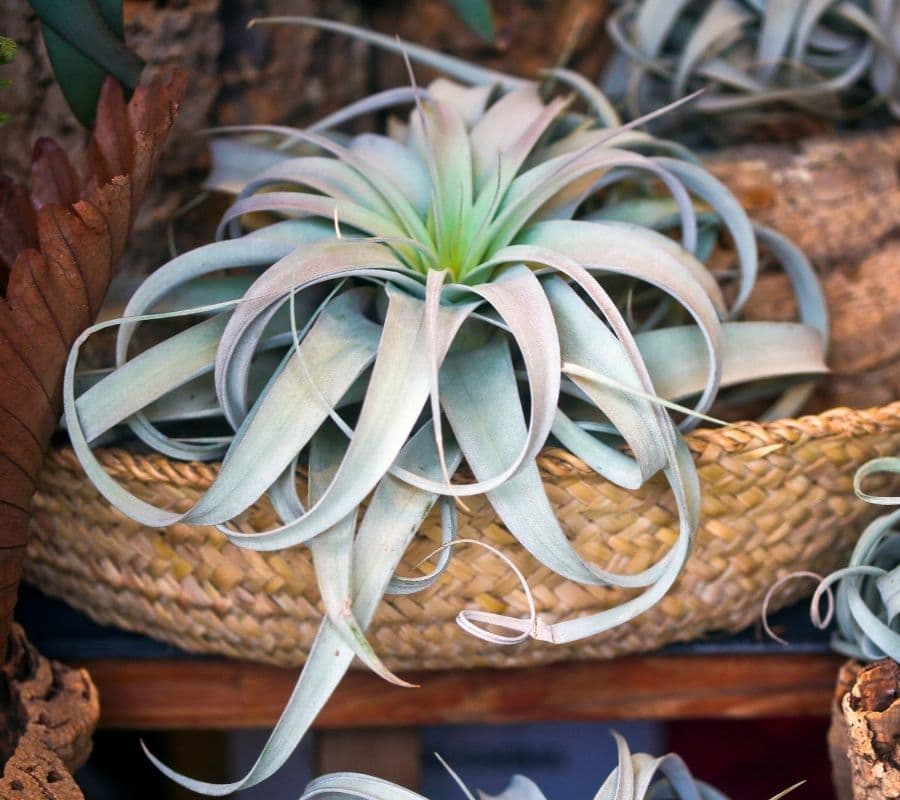
The best facing window for your air plants is basically the same as your other house plants: southern or eastern facing windows.
But it really depends on your set up and how much light comes in. If you have a lot of trees in your yard, for instance, the light will be much more filtered.
It’s most important to make sure your air plants aren’t getting harsh, direct sun, especially evening sun.
If you have them near an east facing window, they can handle a few hours of more direct early morning sun, but keep an eye out for browning leaf tips.
Now, how do you know if your air plants are getting enough indirect light? Let’s take a look.
How to Tell If Your Air Plants Are Getting Enough Light
There are some tell-tale signs that your air plant isn’t happy with the amount of light they’re getting inside. The main sign is when their leaves start turning brown.
Here are some other signs that your air plants aren’t getting enough light indoors:
- dull looking foliage
- extremely slow growth
- leaves turning brown at the tips or base of the plant
It can take a little while for your air plant to complain about not getting enough light, but if they get too much light you’ll know pretty much right away. The signs include:
- crispy, brown leaf tips
- dry, curled up leaves
- totally fried, brown and dead
If you keep your air plants in glass globes or glass terrariums, it’s important to remember that the glass can magnify the heat from the sun and really harm your plants. You’ll also want to make sure they get enough good air circulation.
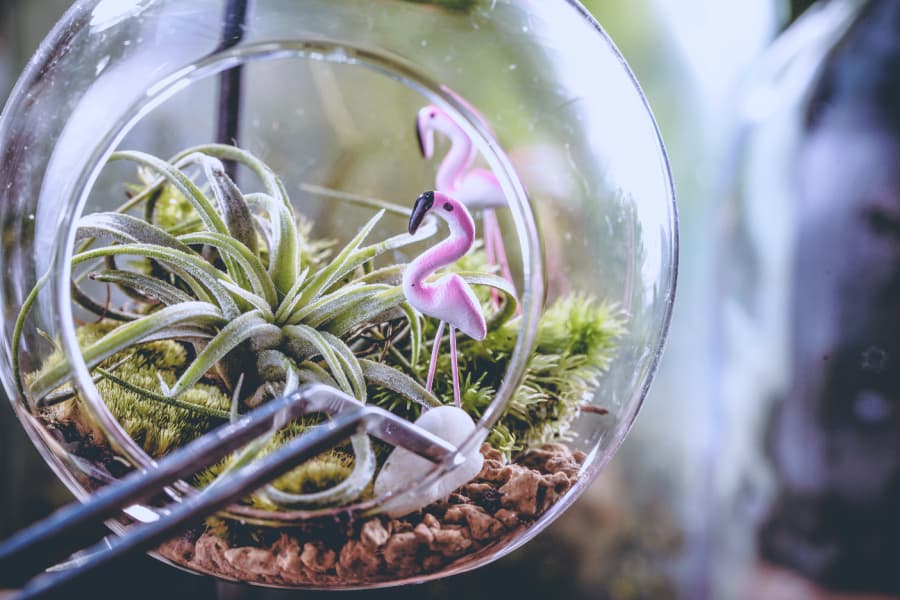
I mentioned earlier that some types of air plants can tolerate more light than others. Let’s look at the difference between Xeric air plants and Mesic air plants when it comes to light.
Difference in Xeric vs. Mesic Air Plant Light Needs
Ok, so there are two main varieties of air plants: Mesic and Xeric. Let’s look at the difference between the two:
- Mesic Air Plants: These air plants need a good amount of indirect light to thrive and like to be watered a bit more frequently. They come from a more humid climate and don’t tolerate direct sunlight well.
Mesic air plants tend to be more green in color and the leaves look fairly smooth and they require more frequent watering. - Xeric Air Plants: These guys can tolerate more light than the mesic variety and they also don’t require quite as much water to be happy. They originate in hot, dry climates and are used to getting more sun and less water.
Xeric air plants tend to be silver or grayish in color. Their trichomes are more noticeable and look like little hairs on the leaves. Since they come from a hotter climate, they don’t require quite as much water.
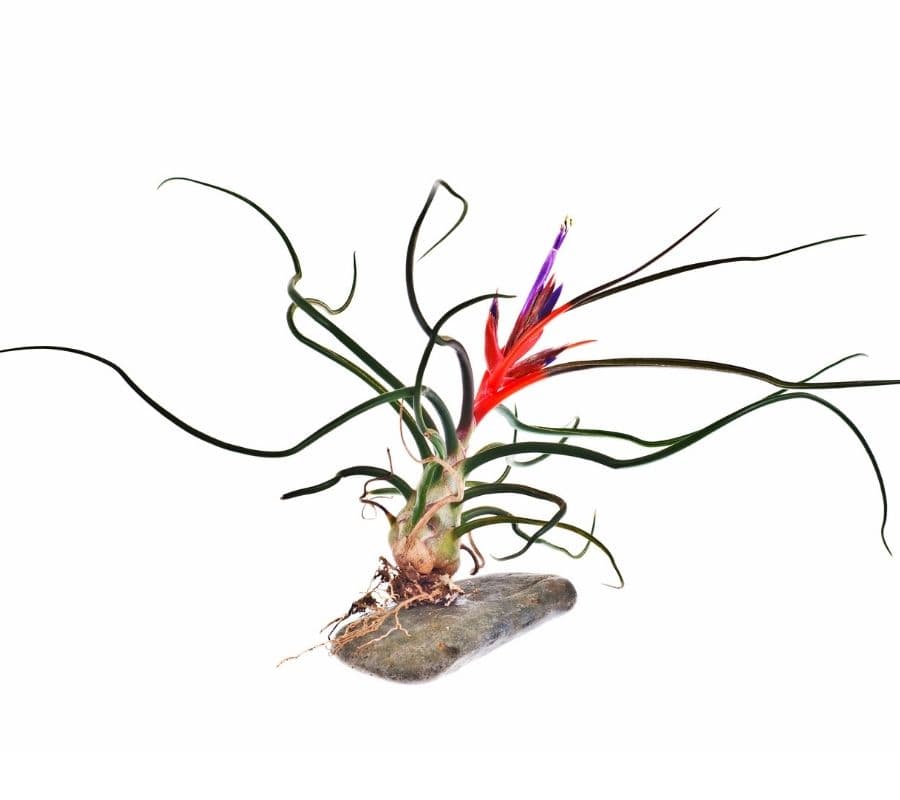
Mesic air plant 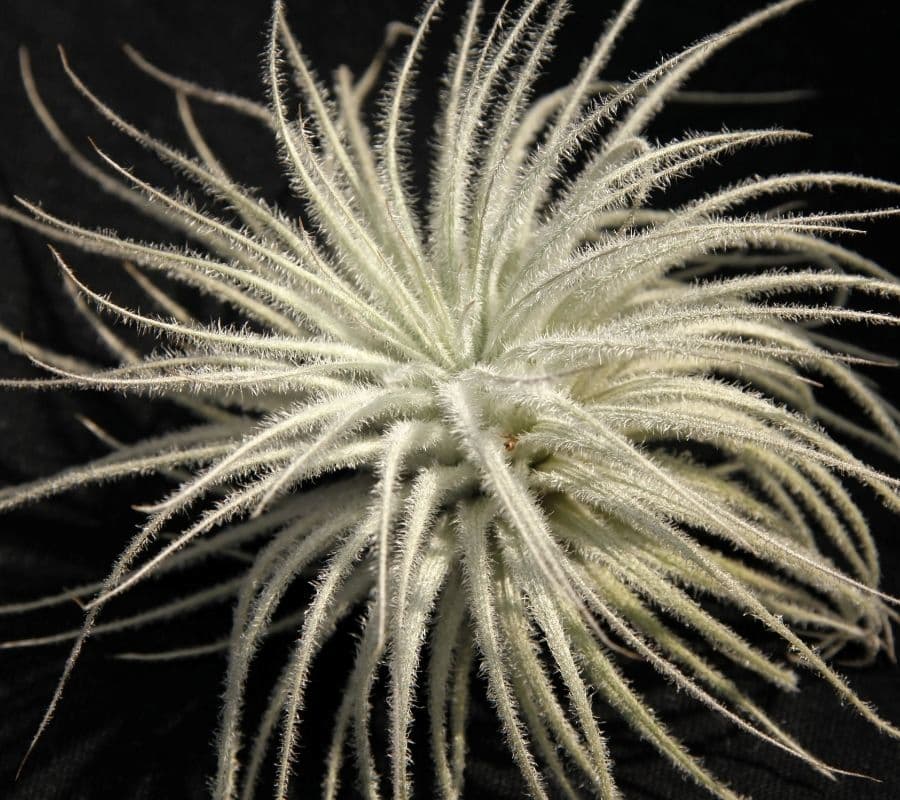
Xeric air plant
If you have a Xeric air plant, like the T. Xerographic, for example, it can tolerate a bit more light than a T. Bulbosa.
Generally, both air plants do really well with lots of bright, but indirect light, so don’t worry if you have both types of air plants.
Just remember, your Xeric air plants can tolerate more light than their Mesic relatives, and you can gradually get them to adapt to more light over time. Just keep an eye out for signs of overheating!
Both Xeric and Mesic air plants need to get enough water every week as well.
Check out this article all about watering air plants to find out why you shouldn’t use plain tap water, using a bowl of water vs. a spray bottle, how pond water can make your air plants happy, and other important tips you need to know when you water air plants!
Using Grow Lights for Air Plants
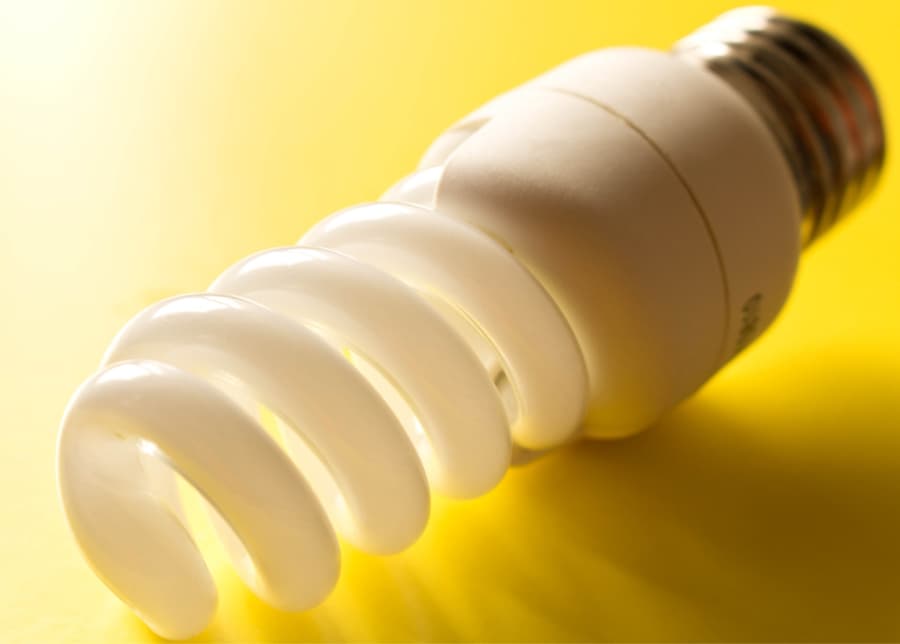
Sometimes you just don’t have the right kind of natural light conditions indoors.
For example, in my house the only windows that would work for house plants are west facing. They get no light in the morning, and too much direct, hot light in the evenings.
If you’re in a similar situation, grow lights are a great option!
You’ll want to get a full spectrum fluorescent light or use LED grow lights. Regular incandescent light bulbs won’t cut it for your air plants.
If you go this route, it’s a good idea to get a timer to automatically turn the lights on and off for you. Your air plants will need 12 hours of light a day from an artificial source, and that makes it super easy.
This is the timer I use and it works really well.
I have my air plants set up with grow lights and they love it. Here are the ones I personally use and recommend:
Frequently Asked Questions
Let’s take a look at some of the most frequently asked questions about air plants and light.
Can air plants survive in low light?
Air plants can survive in low light, but they won’t thrive.
If you want to display your air plant in a place with low light, just be sure to move it to bright, indirect light several times a week to balance it out.
Can air plants grow under LED lights?
Yes! Air plants grow very well under LED lights.
Just be sure to use a timer so they get 12 hours a day, and keep an eye out for any signs of drying out. If they seem dry, bump up the watering schedule a bit.
Can air plants survive in the dark?
Well… they can survive for a short period of time in the dark, but after a while they’ll get real sad.
If you can’t provide indirect sunlight or some sort of grow lights, your air plants aren’t going to make it.
Can air plants get too much light?
Yes, they definitely can get too much light. Air plants don’t do well in direct sunlight, and you’ll know they’ve had too much if they start getting crispy and sunburnt looking.
Bright, indirect light is where it’s at for your air plants.
Do air plants do well in bathrooms?
Actually, yes they do if there’s enough light. The high humidity levels in most bathrooms works well for most air plants (especially Mesic varieties).
If you don’t get enough natural light in your bathroom, supplement with a grow light and they’ll be happy as can be.
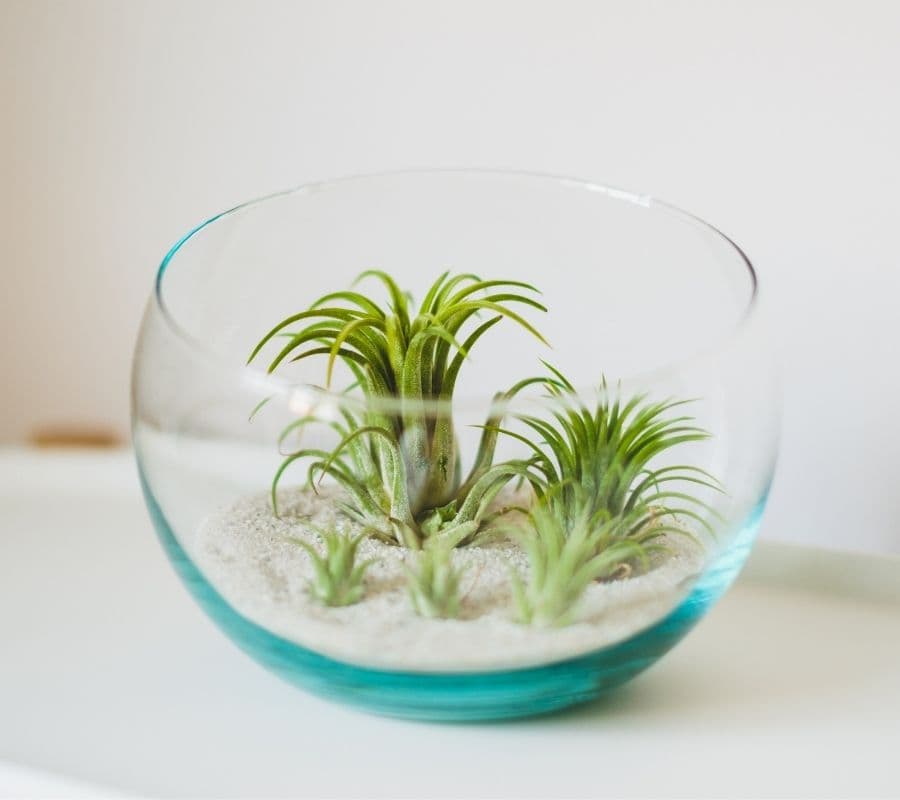
In Conclusion
To recap, air plants thrive with around 8 hours of bright, indirect light each day.
Xeric air plants can handle a bit more natural light than Mesic varieties.
To get your air plant used to more sun gradually over time, just move them closer to a sunny window or supplement with grow lights.
As long as you’re providing bright, indirect light and water them when they need it, your air plants will be happy campers!
Have any questions or comments? Leave them down below!

